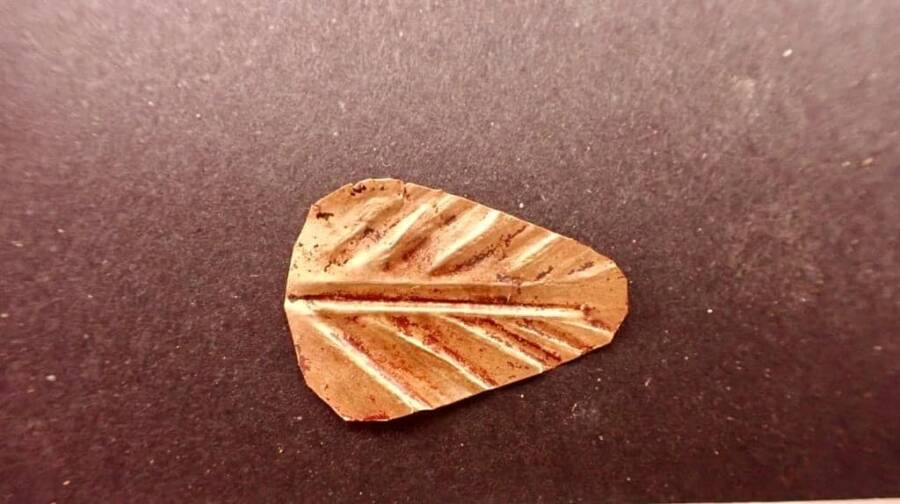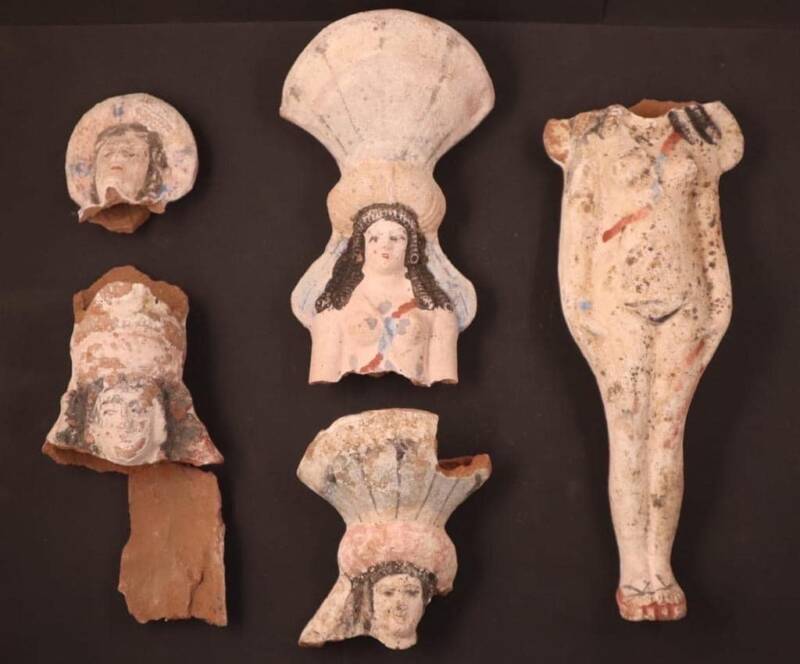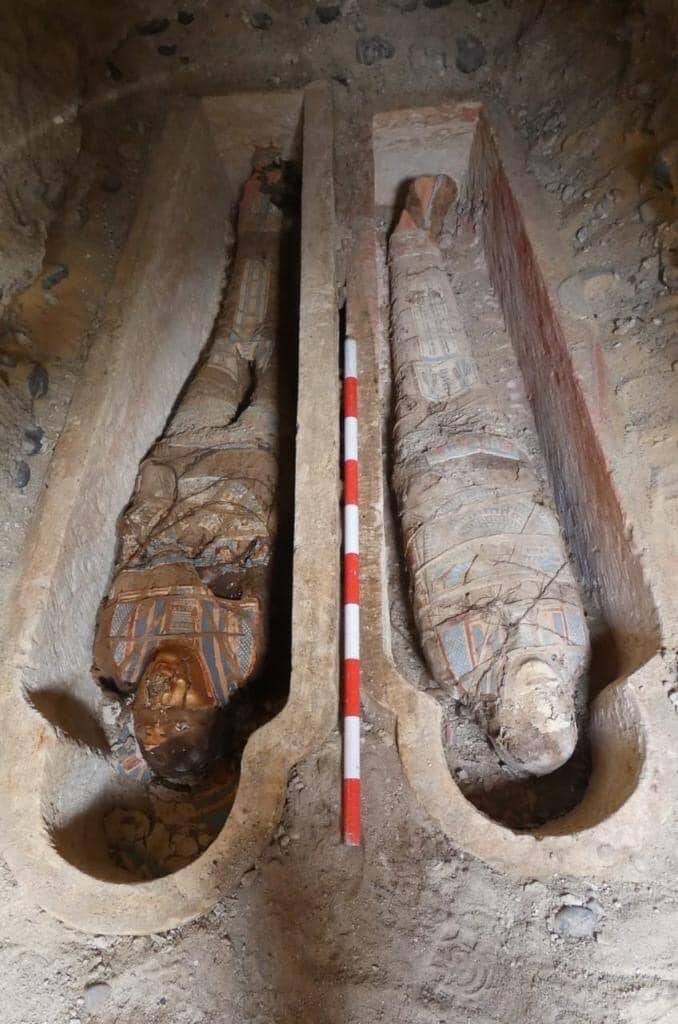In addition to the mummies, archaeologists uncovered the first statues of Isis-Aphrodite ever found in the region.

Egyptian Ministry of Tourism & AntiquitiesOne of the golden tongues discovered at the recent dig. In total, 16 have been found at Oxyrhynchus.
In the ancient Egyptian town of Oxyrhynchus, archaeologists just discovered two mummified bodies that were entombed with golden tongues more than 2,000 years ago. There have now been 16 such mummies found at the site in recent years.
Egyptians believed that placing a gold tongue in a mummy’s mouth gave the deceased the ability to talk to Osiris, the lord of the dead, in the afterlife.
The Egyptian Ministry of Tourism and Antiquities announced the discovery in a post on Facebook, stating that the tombs in which the mummies were found were located near modern-day Al Bahnasa. The two corpses in question were uncovered alongside at least 18 other mummified bodies in two limestone tombs dating to Egypt’s Roman period, between 29 B.C.E. and 641 C.E.
The chambers within the limestone tombs also contained various pages of papyrus filled with Greek writing and mud seals featuring Egyptian iconography.
The identity of the two mummies is unknown, but it is clear that they were wealthy and important citizens given the nature of their burial and their gilded tongues.
“The Egyptian people deposited the golden tongues… to restore vital functions to the dead and also so that the body remained intact in the afterlife. For the Egyptians, gold was the flesh of the gods,” said Esther Pons Mellado and Maite Mascort, co-directors of the archaeological mission at Oxyrhynchus, according to Newsweek.
Nearby the two Roman tombs, the team unearthed three hypogea, or underground burial chambers carved into the natural rock. There, they found nine sarcophagi, two of which remained closed despite the prevalence of grave robbers throughout history.
A number of other fascinating objects were uncovered at this second site, including terra cotta statues depicting the hybrid goddess Isis-Aphrodite — a combination of the Egyptian and Greek deities. Archaeologists also found stone blocks with depictions of various animals, plants, and clusters of grapes.

Egyptian Ministry of Tourism & AntiquitiesThe terra cotta Isis-Aphrodite statues.
“It is the first time that we have found in Oxyrhynchus terra cotta with the image of Isis-Aphrodite and the first time that [these] kind of pieces appear in this area of the middle Egypt,” Pons Mellado and Mascort told Live Science.
Oxyrhynchus once served as a greatly influential city in the ancient world. “Oxyrhynchus was the second city of Egypt after Alexandria,” said Pons Mellado and Mascort. “There was a great business and cultural relationship between these two cities.”

Egyptian Ministry of Tourism & AntiquitiesThe tombs of the golden-tongued mummies at Oxyrhynchus.
The site is representative of Egypt’s Greco-Roman period, as evidenced by the various objects that depict both Egyptian and Greek iconography. This period began after Alexander the Great conquered Egypt in 332 B.C.E., having wrested control of the land from the Persians.
Egypt remained a part of the Eastern Roman Empire for nearly 1,000 years until it was conquered by Arab forces around 641 C.E.
The Oxyrhynchus site offers many clues as to what life was like during the Greco-Roman period in Egypt, showing a confluence of cultures at a time of great change in history. It seems, too, that the site has many more secrets to offer.

Egyptian Ministry of Tourism & AntiquitiesA piece of ancient painted stone recovered at the Oxyrhynchus site.
The archaeological mission at Oxyrhynchus has uncovered numerous ancient relics, including additional mummies with golden tongues back in 2021. At the time of that discovery, researchers also found more than 400 funerary figures depicting the Egyptian god Horus.
As it stands, future excavations at the site promise to unveil a wealth of information about the ancient world.
After reading about the discovery of these golden-tongued mummies, learn how researchers discovered dozens of cat mummies in an ancient Egyptian tomb. Then, read about the giant Egyptian pharaoh statue uncovered beneath a Cairo slum.





